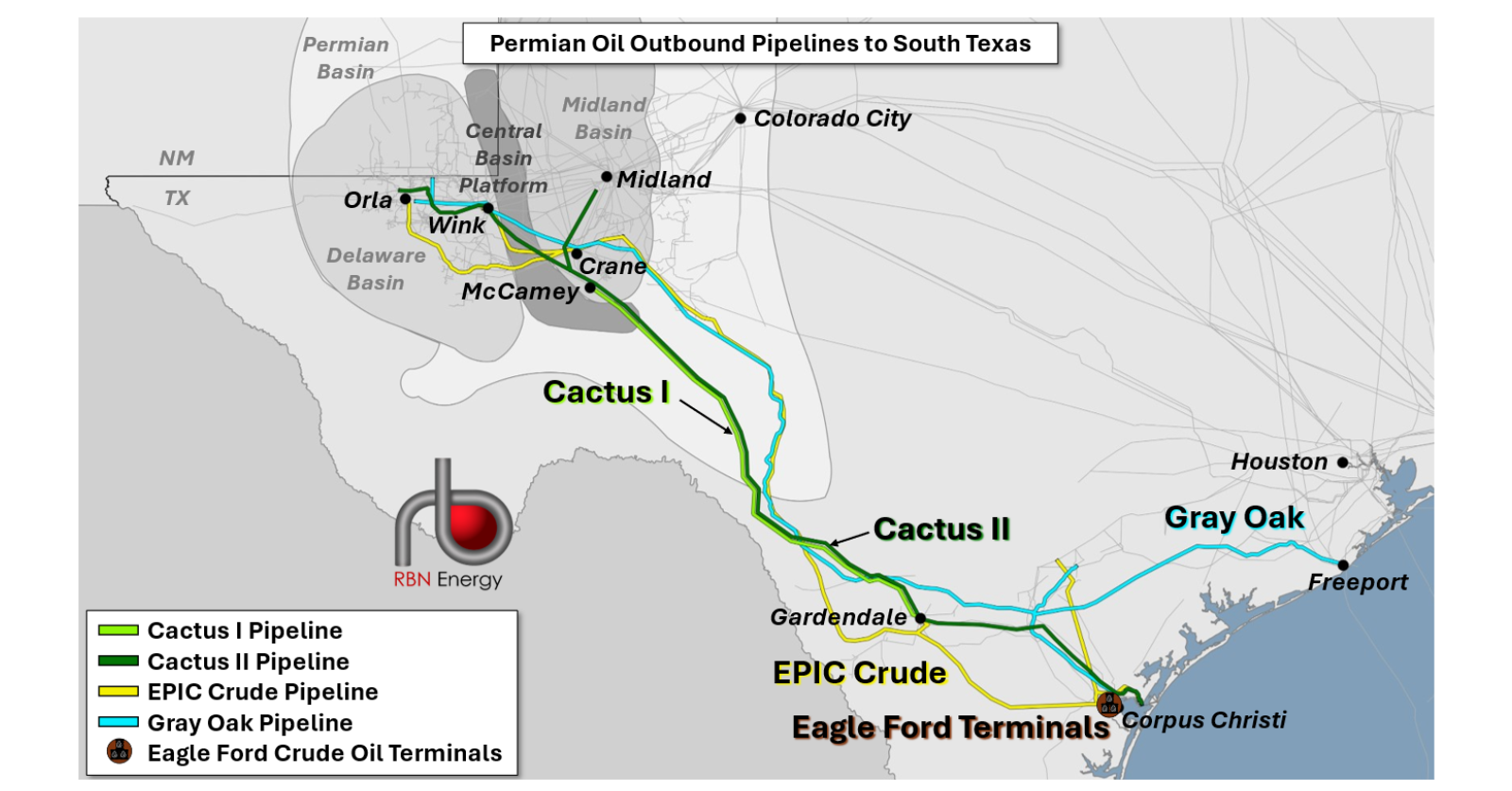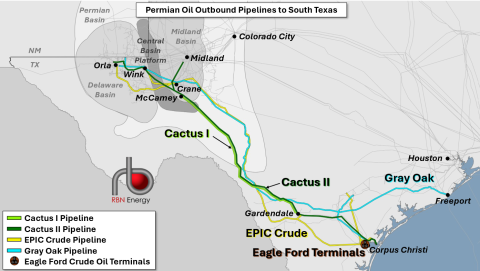The original Cactus Pipeline was a pioneer in moving large volumes of crude oil from the Permian and the Eagle Ford to the Corpus Christi area, which quickly became a leader in U.S. crude exports. Cactus II, an even longer and larger pipeline that came online in H2 2019, only added to Corpus Christi’s export prominence. But the competition with Permian-to-Houston pipelines is fiercer than ever and negotiated rates on pipelines to the Texas Gulf Coast are under pressure. In today’s RBN blog, we look at the Cactus I and Cactus II pipelines and their significance.
This is the latest in our series on crude oil pipelines traveling from the Permian Basin to the Gulf Coast. Today’s blog focuses on the last of the Corpus-bound pipes. Previously, in Bustin’ Out, we looked at the EPIC Crude Pipeline (yellow line in Figure 1 below), which has been operating at full capacity, and then told the story of Gray Oak Pipeline (aqua line) in Movin’ On Up. We recently wrapped up our Permian-to-Houston series with a new Drill Down Report, West Texas Highway, where we detailed how Corpus Christi is competing head-to-head with the Houston area to attract Permian barrels. Corpus Christi surpassed Houston as the top dog in Q1 2025, with Permian-to-Corpus flows averaging 2.5 MMb/d compared to Houston’s 2.4 MMb/d, according to RBN’s weekly Crude Oil Permian report. (In 2024, Houston outpaced Corpus for half of the months.) Combined, the two regions receive about three-quarters of the Permian’s output. Corpus Christi is an ideal spot for crude because it’s home to 857 Mb/d of refining capacity and has extensive export options, including Enbridge Ingleside Energy Center (EIEC) and Gibson’s South Texas Gateway (STG), the top two crude export terminals along the Gulf Coast by volume. (More on those in a bit.)
Figure 1. Permian Oil Outbound Pipelines to Corpus Christi. Source: RBN
Before diving into the details of Cactus I and Cactus II (light-green and dark-green lines, respectively, in Figures 1 and 2), which account for more than one-third of Permian-to-Corpus volumes, let’s discuss the origin story of Plains All American and how the ownership of the Cactus pipelines, which don’t share the same infrastructure, has morphed over time. Back in the 1980s and early ’90s, Plains Resources, a small E&P, expanded into the midstream sector, and in 1998 the company’s midstream subsidiary was spun off via an initial public offering (IPO) and simultaneously acquired All American Co. Ever since, it’s been Plains All American.


